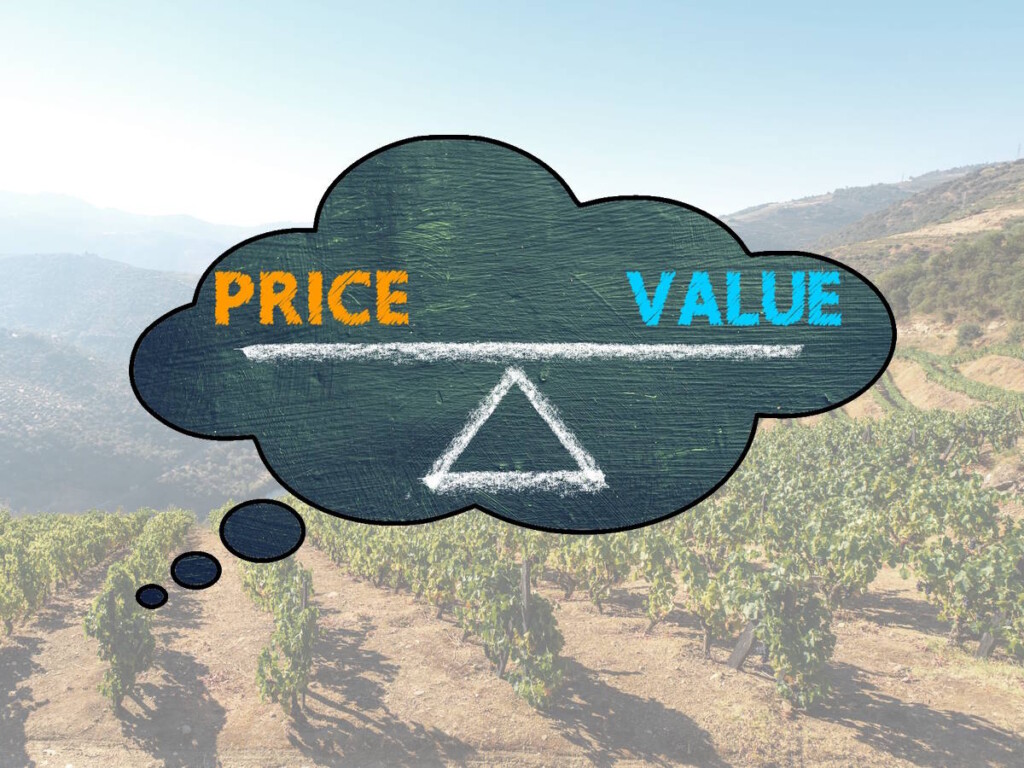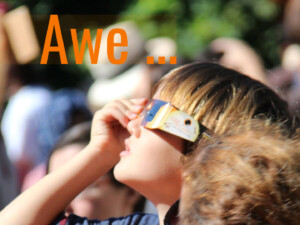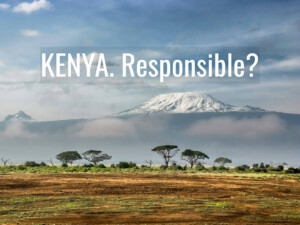Douro on my mind: Measuring & marketing value during the ‘value crisis’

Destination marketers can exploit a general perceived lack of value and trust to build affinity with prospective visitors, according to K Michael Haywood.
In this “Good Tourism” Insight, Professor Haywood describes the opportunity for destination marketers and the attendant challenge for destination managers.
[You too can write a “GT” Insight.]
It has been 20 years since we visited southern Portugal. Now it’s the Douro Valley in the north of the country that beckons.
Thanks to accolades from friends, anticipated cultural and culinary delights, love for fine wines, perceived value for money, and even Portugal’s sustainability plan, I feel an affinity with the region. I am curious to see if it is as wonderful for Canadian snowbirds as I have been led to believe.
There is another reason for wanting to visit. I served as peer reviewer for the 2008 Douro Valley North Portugal Executive Report of the System for Measuring Excellence in Destinations (SMED).
I have just reread my critique of the report’s methodology wherein I noted the need for a gap analysis between visitor expectations and host community (destination management) perceptions. Interesting.
It’s interesting because here I languish in pre-visit mode. With reservations made and deposits paid — and having had no further contact with those organisations — I feel like I’m occupying a liminal space between ‘what was’, ‘what is’, and ‘what will be’; nursing high expectations and beguiled by a Fado lament.
As I reflect on the nature of affinity with and expectation of destinations, I ponder the implications for destination marketers.
AIDA and beyond: Evaluating the whole journey
I’m not usually baffled, but I’ve always wondered why so many destination marketers define their customer journeys as their interactions with a brand rather than as what they are; actual physical and emotional journeys in search of happiness and meaning.
Why do they consider their primary job complete after they have persuaded their target markets to book their travel, accommodation, and tours?
Why do marketers neglect to learn from the experiences visitors have throughout their pre- to post-trip journeys?
Is it because they contort the AIDA (Awareness, Interest, Desire, and Action) model to describe the whole journey, when it merely represents the steps toward a transaction?
See other “Good Tourism” content tagged with
’Travel & tourism and destination marketing’
No wonder then that visitors, having arrived at AIDA’s ultimate destination, the sale, find themselves abandoned; then searching in a fog of blogs and social media influencers for sincere, credible, and timely information about their actual destination.
If destinations acknowledge their responsibility as co-creators of visitor experiences, why do so many ignore the potential for the post-booking, pre-visit, and post-visit stages to build affinity, engagement, loyalty, and future AIDA actions?
Even where ‘retention’ or repeat visitation is a stated goal, why do destinations ignore the relevance of the post-AIDA action stages? Why not build new AID for future A?
A valuable marketing opportunity in a value crisis
There are insights to be gleaned from visitors pre‑, post‑, and during their travels; the value they desire, expect, and actually receive at multiple touchpoints; value that contributes to emotional as well as economic, social, and cultural benefits.
Why do these insights remain veiled?
Is it because companies and communities are ignorant about, or dismissive of, humanity’s value crisis?
Or is it because the accepted accounting version of “value-in-use” ignores “asset-based community development”; development that results in quality-of-life gains, the creation of community shared “wellth”, and the avoidance of overtourism (as well as attends to broader climatic and cultural crises).
Search “Good Tourism” for the keyword ‘Value’
Prospective visitors may care more about local welfare concerns than destinations imagine. Many visitors may wish to plan trips that enhance the value they bring and the value they experience.
Most destinations recognise the necessity for visitors’ in-situ destination experiences. But what happens when there is no follow-up; no visitor-based audits, customer performance indicators, nor any ‘feelings data’ that can help measure value?
Perhaps the inability to measure and manage value through the entire visitor or customer journey is aggravated by a dubious reliance on Net Promoter Scores and an inattention to the development of competencies.
Clearly, many adjustments need to be made in a post-experience world, but shouldn’t greater attention be given to the pre-experience of visitors (differentiated in accord with the archetypes of customer journeys); their stressors, interests, goals, and even their ”mundane emotions”?
See other “Good Tourism” content tagged with
’Travel & tourism and destination management’
And what about evaluating the value-creation outcomes (beyond jobs and growth) for host communities and their individual hosts; the people delivering services and co-creating experiences? What is the value they receive or are denied? How does that affect the value that visitors receive or are denied?
Suffice to say, I remain puzzled by those organisations and destinations that lack sophistication when it comes to community- and customer-centricity, and/or remain dismissive of well-being and ESG (environmental, social, and governance) requirements.
These are centricities of particular importance in a ‘post-truth’ world in which prospective travellers are just as likely to worry about transportation snafus, pandemics, scams, safety, and security as they are to imagine enjoyable escapes.
So wouldn’t it be reassuring to have someone (even a virtual service agent) reach out, listen, offer help and advice, and keep you informed as you anticipate your adventure?
Valuing visitor affinity
Destinations make huge investments in branding and storytelling that is designed to evoke emotions and connect visitors with shared interests and values. (This case study on Douro Valley wine is an example.)
Relationship-building by destinations is most often focused on media influencers (social and traditional), corporate loyalty programs, and those who make decisions for “high-value customers”, especially in MICE markets.
Such efforts should not be confused with building affinity.
Affinity is a consumer-determined, behaviourally-complex construct that reveals visitors’ overall sense of attachment to a destination; its landscape, culture, heritage, values, and even actions, including action around sustainability.
Search “Good Tourism” for the keyword ‘Storytelling’
One wonders whether destination branding and storytelling has the wherewithal to evoke emotionally-rich responses akin to affinity. After all, their sustained effectiveness is totally dependent on the size and appropriateness of investments in tourism, not to mention the ingenuity and effort required to lay the groundwork for receiving visitors and delivering on both their and locals’ expectations.
Branding, storytelling, and the basic foundations will only work to a point. Destinations must embody a community of purpose if they are to embark upon a pursuit of magnificence — in its people, place, products, and performance — sufficient to inspire affinity.
It is wise to remember that affinity is evoked in two complementary ways: The “experiencing self” and the “remembering self” (which can be distorting).
Affinity endures when it is fervent, drives passions, and is bonding. But it can easily be revoked when visitor appeal diminishes, local antagonism festers, there is a perceived lack of care and gratitude, and when ill-conceived development erodes trust.
Valorising purposeful destinations-as-communities
Like many of us, marketers can suffer from short-circuited mindsets, a lack of focus, and an inability to keep up with change and manage strategic ambiguity.
But nothing is more worrisome than marketers who lose sight of the basics of marketing 3.0, engage in marketing malpractices, or subscribe to anti-progressive notions.
Fortunately, through deep thought and engagement, destination marketers can regain their footing, influence, and moral imperative, and begin to honour their community‑, societal‑, and customer-centric obligations.
As Destination International contends, everything depends on a destination’s commitment to community shared value.
I would contend that we must dig deeper to:
- Pursue tourism on a community’s terms;
- Reimagine the purpose of destinations (questions);
- Take the long view;
- Undertake deep-dive assessments of value and its creation;
- Speak truth to power;
- Communicate with sincerity;
- Create value throughout the whole journey (including pre- and post-visit);
- Favourably affect host/guest perceptions and opinions;
- Create value that resonates with mind, heart, and spirit;
- Improve performance via multiple elements of value;
- Foster affinity toward communities-as-destinations;
- Accept safe uncertainty;
- Recognise HR’s new operating model;
- Tap the power of generosity; and
- Support purposeful disruptive innovation.
Now, over to you. As you consider these ideas, let us know how destination marketers and managers can further contribute to the creation of ‘Destination Excellence’.
What do you think? Share a short anecdote, comment, or question below. Or write a “GT” Insight of your own. The “Good Tourism” Blog welcomes diversity of opinion and perspective on travel & tourism because travel & tourism is everyone’s business.
Featured image (top of post): Douro Valley, Portugal by Maksym Kaharlytskyi (CC0) via Unsplash. Price / value scale by Tumisu (CC0) via Pixabay. Thought bubble by Clker-Free-Vector-Images (CC0) via Pixabay.
About the author
K Michael Haywood is Professor Emeritus, School of Hospitality, Food and Tourism at the University of Guelph in Ontario, Canada. Prof Haywood has recently written an e‑book “Astonish, Smarter Tourism by Design”. Find Michael on LinkedIn.






